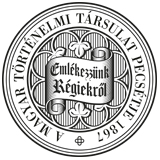Századok – 2003
TANULMÁNYOK - Zsoldos Attila: Az özvegy és a szolgabírák 783
AZ ÖZVEGY ÉS A SZOLGABÍRÁK 807 amelyből a korai szolgabirák, mint láthattuk, kikerültek. Baranya megyében ez az üj típusú megyei bíráskodás meglétére utaló legkorábbi nyom, így aztán az sem lehetetlen, hogy a megye szolgabírói testülete éppen ez alkalommal született meg. Ez az értelmezés az oklevél tartalmából bizonyos mértékig következik is, hiszen a dokumentum nem foglal írásba egyetlen konkrét ügyben született döntést sem, kizárólag annak bizonyságául szolgál, hogy a „négy nemes kapitány" a királyné felhatalmazásából jár el. Az adat jelentőségét növeli, hogy — nem számítva Csák Máté bán szlavóniai gyűlését — itt mutatható ki első alkalommal az 1273-ban bevezetett két új intézmény, a szolgabíróság és a congregatio összekapcsolódása.18 7 A baranyai eset ily módon valósággal megtestesíti azt a kettősséget, mely az özvegy és a szolgabirák közötti kapcsolatot jellemzi: a megyei bíráskodás új intézménye — nem kis részben legalábbis — Erzsébet ellenében, ám mégis a királyné közreműködésével született meg. THE WIDOW AND THE SZOLGABÍRÁK Attila Zsoldos (Summary) In the summer of 1272 unexpectedly died István V king of Hungary (1270-1272). His successor was his ten-year-old son, László IV (1272-1290). The study analyses the consequences in the government of the kingdom of the fact that the new king was a minor. It was not for the first time that the problem emerged: it did happen sometimes before that a member of the dynasty acceded to the throne as a child or was otherwise unable to carry out his duties as a king. In those cases the problem was always solved by conferring the direction of the government on one of the elder members of the royal family. The person involved could be the widowed queen-mother, or the queen if older than her minor husband, but also the oldest male member of the dynasty. In 1272 several possibilities offered themselves as well. One obvious solution would have been to put the reins of government in the hands of the only living adult male of the dynasty, namely Béla, duke of Macsó. But after his assassination in November 1272 by one of the oligarchs the only person to lead the country through the difficulties presented by the new ruler's minority remained the widow of István V queen Elisabeth. In fact, we have solid evidence attesting that Elisabeth did try to act as "regent" at least until the end of 1273. However, her role never assumed an institutional character and was rather based on the personal influence of the widow. It is exactly from the same time that the first pieces of information showing the existence of the new institutions of provincial jurisdiction, namely the szolgabirák (judices nobilium) and the congregations held by the palatine (congregatio generalis) have come down to us. Hungarian historians have long dated the emergence of the institution of the szolgabirák to the middle third of the 13th century and have attached it to the corporative movement of the lesser landowners called servientes ("persons owing service to the king"). The study refutes the elements of this conception and proves that the institutions of the szolgabirák and the palatinal congregation were in fact born in 1273 and were closely connected to the aspirations of queen Elisabeth to the regency. After 1267 one of the major privileges of the servientes regales was that they could only be sued before the king, which, in the case of the queen's regency, would have meant their subjection to the jurisdiction of Elisabeth. This, however, would have been a form of "female authority", wholly unacceptable to the barons of the royal council, who accordingly tried to limit by all possible means the queen's freedom of action. One way was to restrict her immediate involvement in the lawsuits szentdienesi Péter fia Egyeddel (ÁÚO IX. 435., vö. Györffy György: Az Árpád-kori Magyarország történeti földrajza I3 -IV Bp. 1987-1998. I. 384.). 187 A továbbiakban, amint az köztudott, a jelenség általános, 1. pl. 1284: ÁÚO IX. 400-401.; 1288: CD V/3. 434-436.; (1289 u.?): DL 84 201.; 1298: Zichy I. 89., stb.
